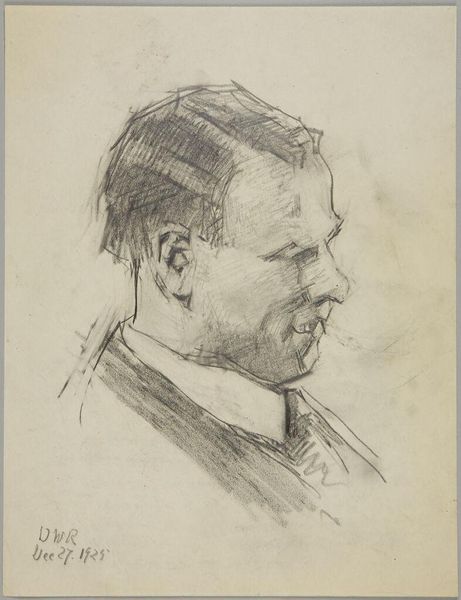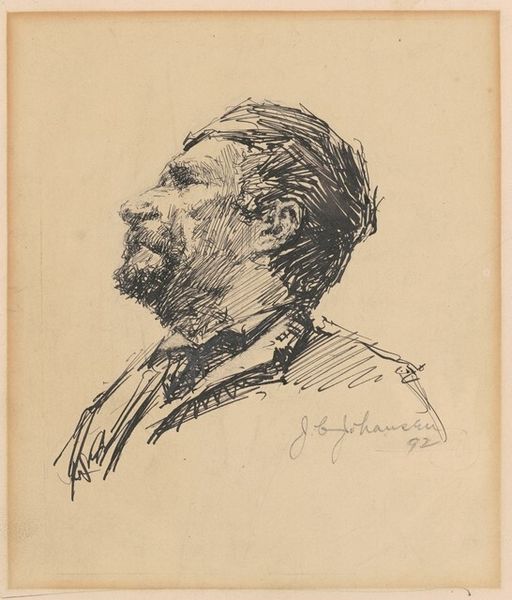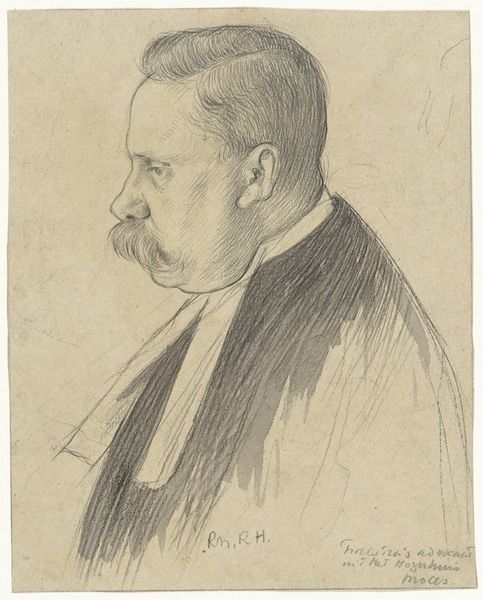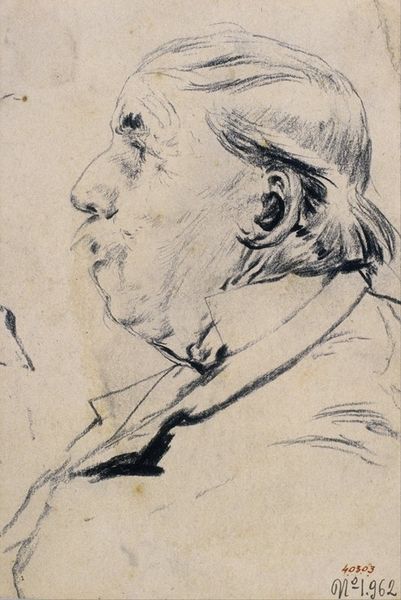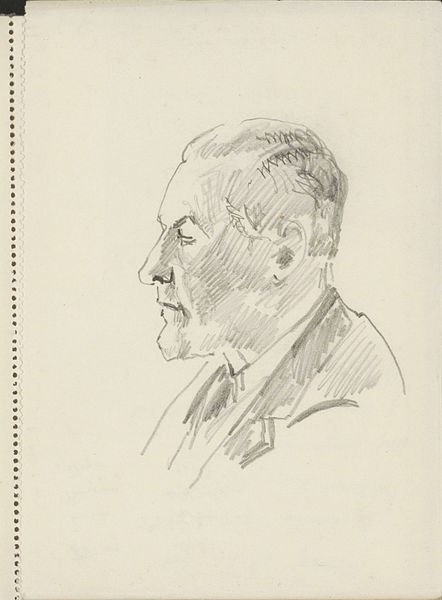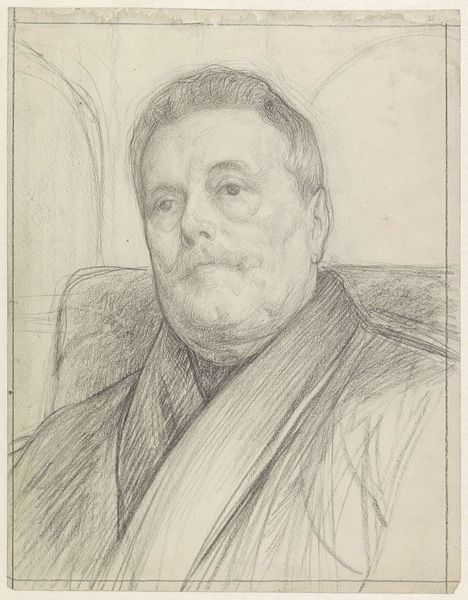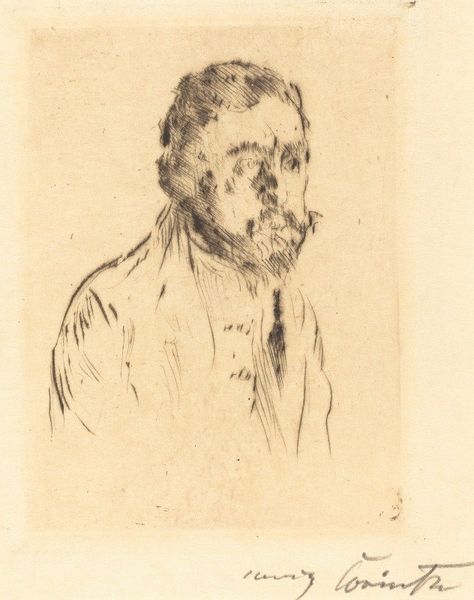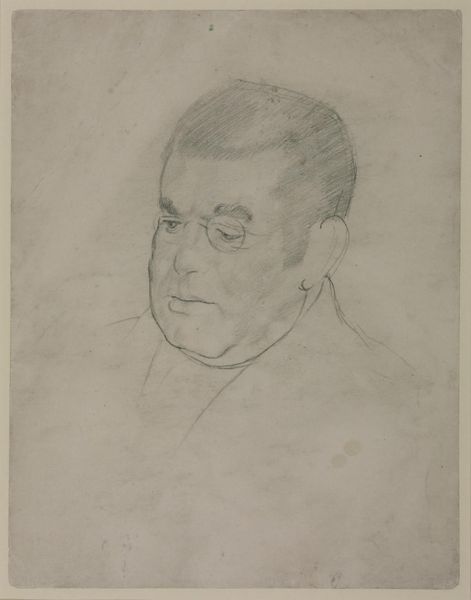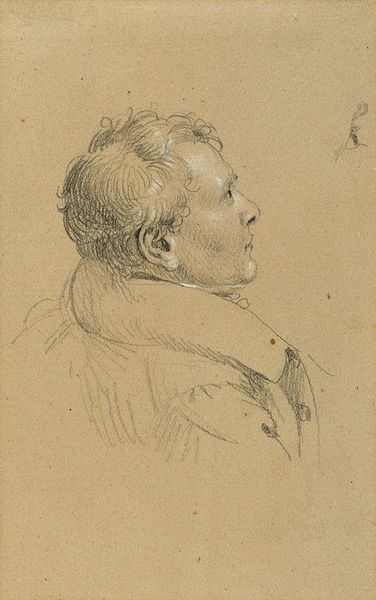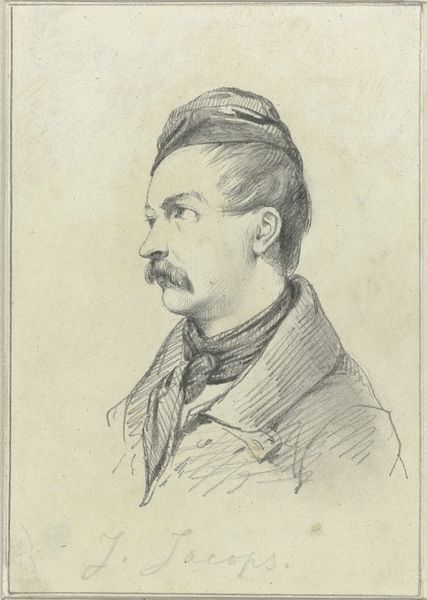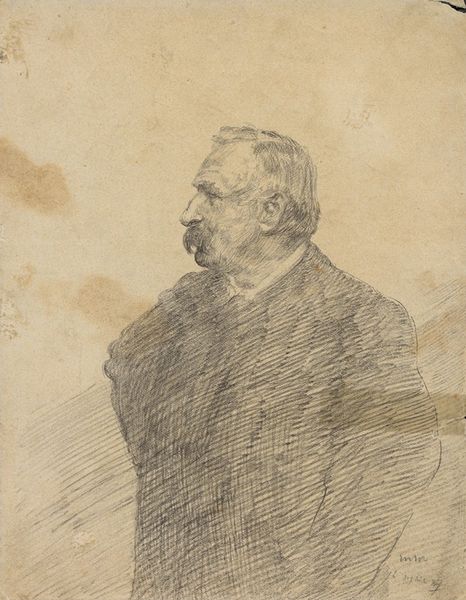
drawing, graphite
#
portrait
#
drawing
#
graphite
#
portrait drawing
Copyright: Public Domain: Artvee
Editor: Here we have Peder Severin Krøyer's "Portræt af Carl Locher, profil," created in 1898 using graphite. The swiftness of the lines almost gives a sense of the man in motion, or perhaps just a fleeting glimpse. What’s most striking to me is the raw quality of the graphite—how does this medium influence our understanding of the work? Curator: A vital point. We see the graphite not merely as a tool for representation but as a material with its own inherent qualities, directly influencing the artwork's message and meaning. The choice of graphite implies accessibility. This was not a commissioned oil portrait intended for a wealthy patron. Krøyer’s choice speaks to a certain kind of labour: quickly rendered on perhaps inexpensive paper. Note too the implications around consumption – the availability and disposable nature of drawing media in the late 19th century, contrasting with the labour involved in creating a painting. Do you think the speed in production elevates or degrades the importance of the subject, or perhaps neither? Editor: That’s a good question! Initially, I thought it might devalue the sitter, implying the drawing was just a quick sketch. But, I see that the speed may emphasize the intimate or familiar relationship between Krøyer and Locher and emphasizes the casual nature of their encounter. Is that a valid point? Curator: Precisely. This medium bypasses the rigid formalism of portraiture for elite society, hinting at a close social circle of artists using their craft on each other and thus generating new ways to approach a rapidly-shifting materialist environment. Thinking about what sort of visual languages and media they have inherited, and also what possibilities might be emerging at the time? Editor: This has made me realize that choosing graphite over paint transforms the purpose of the portrait from a formal representation to a more intimate glimpse into the life of the sitter and the artistic community around him. Curator: Exactly, we're not just looking at a face, but considering a matrix of material relationships and cultural contexts.
Comments
No comments
Be the first to comment and join the conversation on the ultimate creative platform.
